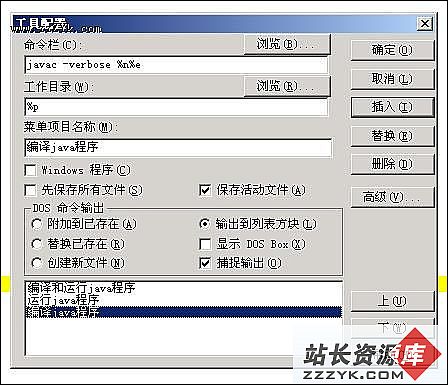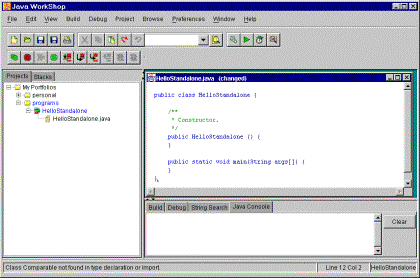当前位置:编程学习 > JSP >>
答案:二、 出错管理(Managing Errors)
Struts框架有两个主要的类来管理出错,一个是org.apache.struts.action.ActionError类,它对错误信息进行包装。另一个是org.apache.struts.action.ActionErrors类,它是ActionError实例的容器。这两个类经常要在ActionForm及Action类中使用。其具体的使用如下:
ActionErrors errors = new ActionErrors();
errors.add("propertyname", new ActionError("key");
errors.add(ActionErrors.GLOBAL_ERROR,new ActionError("key");
关于"propertyname"和ActionErrors.GLOBAL_ERROR,对前者用在ActionForm中,这里是对应表现层(JSP)中的属性值。而对后者则用在Action中,它对应struts-config.xml的<global-forwards />中描述的信息。例子:
ActionForm类:
public class LoginForm extends ActionForm {
…………………
public ActionErrors validate(ActionMapping mapping,HttpServletRequest request) {
ActionErrors errors = new ActionErrors();
if ( (username == null ) || (username.length() == 0) ) {
errors.add("username",new ActionError("errors.username.required"));
}
if ( (password == null ) || (password.length() == 0) ) {
errors.add("password",new ActionError("errors.password.required"));
}
return errors;
}
…………………
}
Action类:
public class LoginAction extends Action {
……………………
public ActionForward execute(ActionMapping mapping,ActionForm form,HttpServletRequest request, HttpServletResponse response) throws IOException, ServletException {
String user = null;
// Default target to success
String target = "success";
// Use the LoginForm to get the request parameters
String username = ((LoginForm)form).getUsername();
String password = ((LoginForm)form).getPassword();
user = getUser(username, password);
// Set the target to failure
if ( user == null ) {
target = "login";
ActionErrors errors = new ActionErrors();
errors.add(ActionErrors.GLOBAL_ERROR,new ActionError("errors.login.unknown",username));
// Report any errors we have discovered back to the
// original form
if (!errors.empty()) {
saveErrors(request, errors);
}
}
else {
HttpSession session = request.getSession();
session.setAttribute("USER", user);
}
// Forward to the appropriate View
return (mapping.findForward(target));
}
}
在表现层中表现错误只须要写上<html:error />标签即可。
上一个:HTML、Swing还是XML,Java客户端工具选择?(四) 转
下一个:半翻译半整理的一点struts的东东,很浅显的,欢迎指正(三)
- 更多JSP疑问解答:
- jsp新手求指导,不要笑!
- 如何让一个form提取的值传递给多个jsp?
- DW中,新建的html页面能否有jsp或php代码?
- jsp 如何限制表单,实现只能填写特定的数据。
- jsp 和javabean结合的程序有问题
- 从数据库里取出的数据如何传递到另外的jsp页面中
- 你好,ext嵌入那个jsp页面,是不是还需要加上一些插件啊,不太懂,麻烦你了。
- JSP不能处理所有问题吗?还要来一大堆的TLD,TAG,XML。为JSP 非要 Servlet 不可吗?
- 光标离开时全角转半角在jsp中怎么实现
- jsp 页面 打开 pdf 文件 控制大小 和 工具栏 能发份源码么 谢啦
- jsp页面点保存按钮,运行缓慢,弹出对话框提示
- jsp刷新页面如何不闪屏
- jsp 与html 的交互问题?
- jsp小数显示问题 例如 我在oracle 数据库中查询出来的是 0.01 但是在jsp页面上就显示成 .01 没有前面的0
- jsp中日历控件





